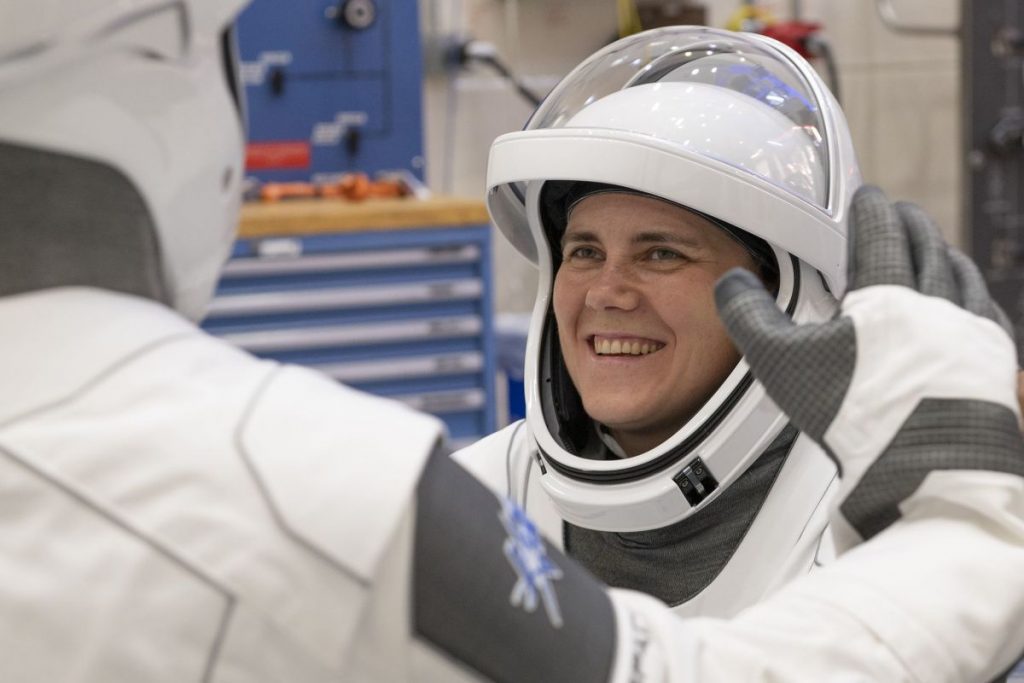CAPE CANAVERAL, Fla. — SpaceX launched the Crew-5 mission for NASA today (Oct. 5), sending four astronauts toward the International Space Station (ISS).
As its name suggests, this is SpaceX’s fifth crewed mission to the ISS under NASA’s commercial crew contract. The company’s Dragon capsule Endurance is carrying a diverse crew — NASA astronauts Nicole Mann and Josh Cassada, Japanese spaceflyer Koichi Wakata and Russian cosmonaut Anna Kikina.
This is Wakata’s fifth spaceflight, but his three crewmates are all rookies. And Mann and Kikina get to pin other firsts to their collars for this mission as well: Mann is the first Native American woman to reach space, and Kikina is the first cosmonaut to launch with SpaceX.
Kikina’s ride is part of a crew-swap agreement between NASA and Roscosmos, the Russian space agency, which was signed earlier this year.
Photo Gallery: SpaceX’s Crew-5 astronaut launch in amazing images
More: SpaceX’s Crew-5 astronaut mission: Live updates
The long-anticipated agreement came over this past summer, during Russia’s ongoing invasion of Ukraine, which has spawned increasing tensions between Russia and much of the rest of the world. Though NASA officials cite the timing as coincidental, the agreement was announced on July 15, the same day that controversial Roscosmos director Dmitry Rogozin was removed from his post.
Inflammatory tweets and other statements by Rogozin fueled controversy earlier in the year, not only over the seat swap agreement but also regarding Russia’s continued partnership in the ISS program. Though NASA and Roscosmos have both stressed that space station operations continue as usual despite the ongoing war, tensions seem to have subsided since Rogozin’s departure.
The first mission under the new crew-swap deal occurred last month, when NASA astronaut Frank Rubio launched to the ISS alongside two cosmonaut companions aboard a Russian Soyuz rocket. Kikina’s flight wraps up this particular swap, which came about following the United State’s renewed ability to launch astronauts to orbit from American soil.
The Soyuz was the only orbital astronaut ride available after NASA retired its space shuttle fleet in 2011 — until SpaceX demonstrated that ability in May of 2020 with its landmark Demo-2 test flight to the ISS. Elon Musk’s company has now launched eight crewed orbital missions overall, two of them private tourism missions, with a number of others already lined up for the future. And several of these coming flights will carry cosmonauts.
“As far as future work. I think everybody’s well aware we signed an agreement with Roscosmos for one flight this year, one flight next year and one flight in ’24,” Joel Montalbano, NASA’s ISS program manager, said during a postlaunch press conference today.
Those cosmonaut-flying crew-swap missions will all employ SpaceX vehicles. If possible, NASA aims to continue this international cooperation with Boeing’s Starliner capsule, which is set to fly its first crewed test flight to the ISS in early 2023, Montalbano added.
The ISS is officially approved to operate only through 2024. NASA has signed on through 2030 and hopes that the other program partners will do the same; if that happens, the agency will seek to extend the seat-swap agreement with Roscosmos beyond 2024, Montalbano said.
Some sort of extension appears to be likely. In recent months, Russian space officials have said that the nation plans to leave the ISS program after Russia gets its own space station up and running in Earth orbit. However, the Russian outpost isn’t expected to be operational until 2028 at the earliest.
Follow us on Twitter @Spacedotcom (opens in new tab) or on Facebook (opens in new tab).

